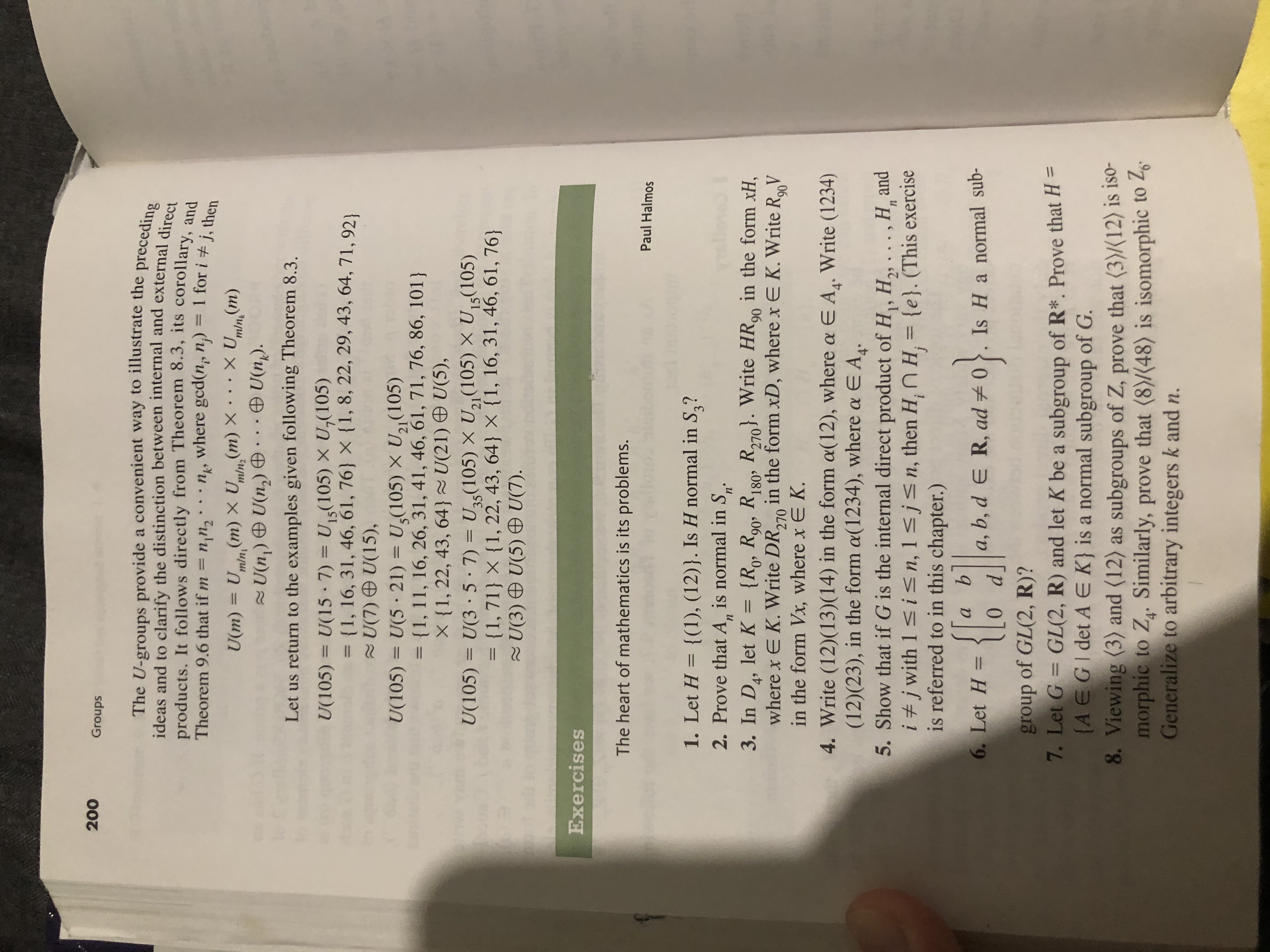8.

Extracted text: 200 Groups The U-groups provide a convenient way to illustrate the preceding ideas and to clarify the distinction between internal and external direct products. It follows directly from Theorem 8.3, its corollary, and Theorem 9.6 that if m= nn2 where gcd(n, n) = 1 for i # j, then XU(m) (m) X U(m) X m/n U(m) = U U(n) U(n) mln minz U(n). Let us return to the examples given following Theorem 8.3 U15(105) X U,(105) U(105) U(15 7) = {1, 16, 31, 46, 61, 76 X {1, 8, 22, 29, 43, 64, 71, 92 U(7) U(15), U,(105) X U21 (105) U(105) U(5 21) = {1, 11, 16, 26, 31, 41, 46, 61, 71, 76, 86, 101) X {1, 22, 43, 64 U(21) U(5), U(3 5 7) = {1, 71} X {1, 22, 43, 64} X {1, 16, 31, 46, 61, 76} 2U(3 ) U(5) U(7). U5(105) X U2 (105) X U5(105) U(105) Exercises The heart of mathematics is its problems. Paul Halmos 1. Let H = {(1), (12)}. Is H normal in S,? 2. Prove that A, is normal in S п' n 3. In D, let K where x E K. Write DR, in the form xD, where x E K. Write RV in the form Vx, where x E K {Ro, R90, R180 R270. Write HR9 in the form xH = , 270 4. Write (12)(13)(14) in the form a(12), where a E A. Write (1234) (12)(23), in the form a(1234), where a E A. 5. Show that if G is the internal direct product of H, H2, ., H and i #j with 1 s in, 1 sjsn, then H, n H, {e}. (This exercise is referred to in this chapter.) a a, b, d e R, ad 0.Is Ha normal sub- 6. Let H = group of GL(2, R)? 7. Let G GL(2, R) and let K be a subgroup of R*. Prove that H = (A EGI det A E K} is a normal subgroup of G. 8. Viewing (3) and (12) as subgroups of Z, prove that (3)(12) is iso- morphic to Z. Similarly, prove that (8)/(48) is isomorphic to 2 Generalize to arbitrary integers k and n.